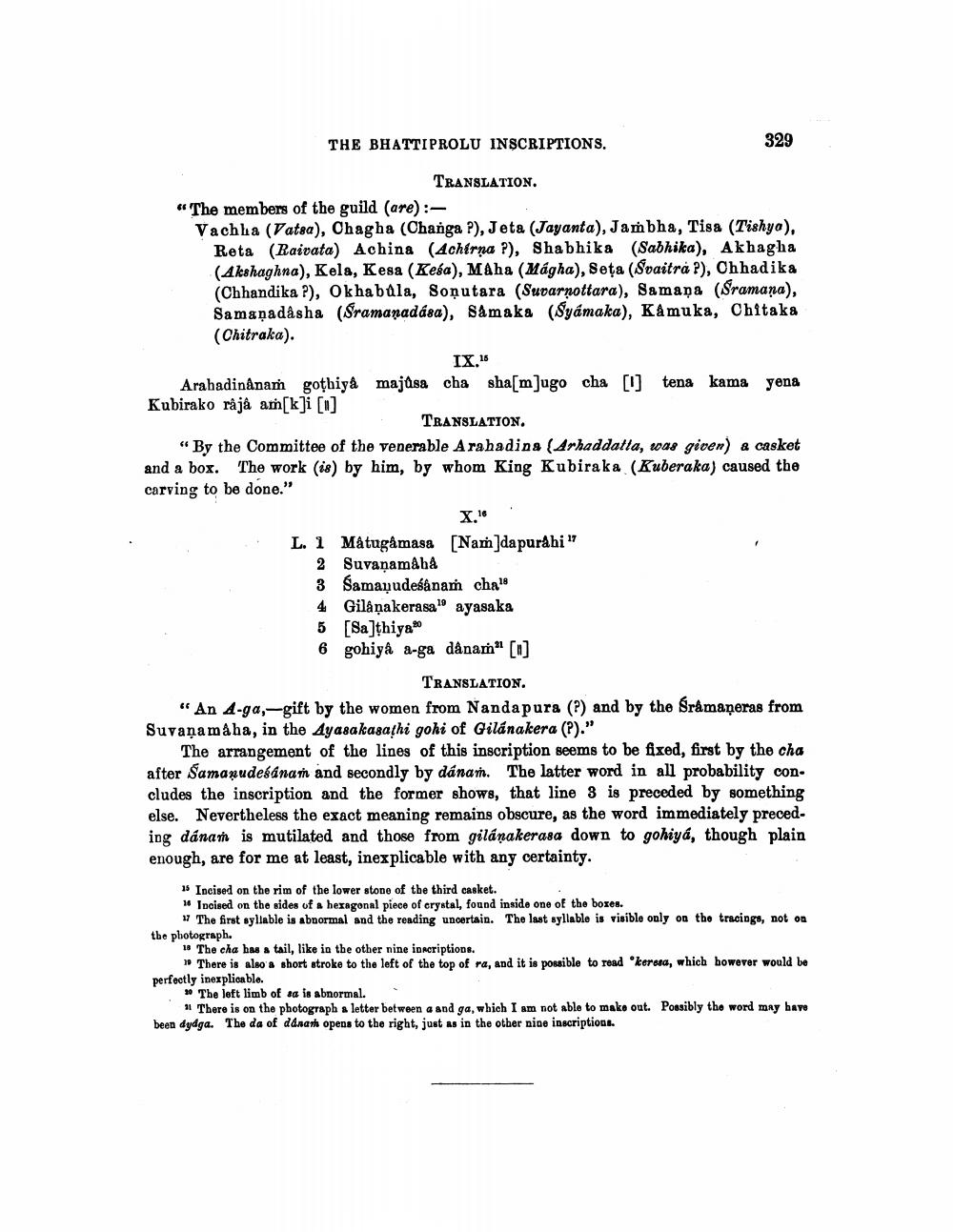________________
THE BHATTIPROLU INSCRIPTIONS.
TRANSLATION.
329
"The members of the guild (are) :
Vachha (Fataa), Chagha (Changs ?), Jeta (Jayanta), Jambha, Tiss (yo), Reta (Raivata) Achina (Achirna ?), Shabhika (Sabhika), Akhagha (Akshaghna), Kela, Kesa (Kesa), MAha (Mágha), Seta (Svaitra ?), Chhadika (Chhandika P), Okhabala, Sonutara (Suvarpottara), Samans (Sramana), Samanadasha (Sramapadása), Samaks (Sydmaka), Kamuks, Chitaks (Chitraka).
IX.15
Arahadinânam gothiya majusa cha sha[m]ugo cha [1] tena kama yena Kubirako râjâ am[k]i [1]
TRANSLATION.
"By the Committee of the venerable Arahadina (Arhaddatta, was given) a casket and a box. The work (is) by him, by whom King Kubiraka (Kuberaka) caused the carving to be done."
X.16
L. 1 Mâtugâmasa [Nam]dapurâhi"
2 Suvaṇamâhâ
3 Samayudeáánamh cha"
4 Gilanakerasa" ayasaka
5 [Sathiya"
6 gohiya a-ga dânam" ["]
TRANSLATION.
"An 4-ga,-gift by the women from Nandapura (?) and by the Śrâmaneras from Suvanamáha, in the Ayasakasashi gohi of Gilánakera (?)."
The arrangement of the lines of this inscription seems to be fixed, first by the cha after Samanudeśanam and secondly by dánam. The latter word in all probability concludes the inscription and the former shows, that line 3 is preceded by something else. Nevertheless the exact meaning remains obscure, as the word immediately preceding dánam is mutilated and those from gilánakerasa down to gohiya, though plain enough, are for me at least, inexplicable with any certainty.
15 Incised on the rim of the lower stone of the third casket.
16 Incised on the sides of a hexagonal piece of crystal, found inside one of the boxes.
17 The first syllable is abnormal and the reading uncertain. The last syllable is visible only on the tracings, not on the photograph.
18 The cha has a tail, like in the other nine inscriptions.
There is also a short stroke to the left of the top of ra, and it is possible to read "keresa, which however would be perfectly inexplicable.
20 The left limb of sa is abnormal.
There is on the photograph a letter between a and ga, which I am not able to make out. Possibly the word may have been dydga. The da of dánam opens to the right, just as in the other nine inscriptions.




